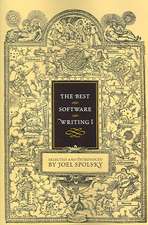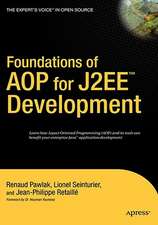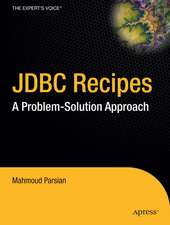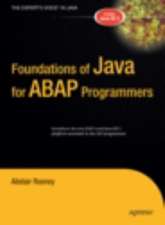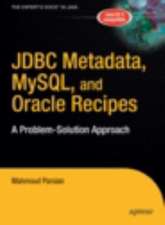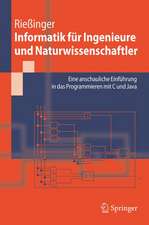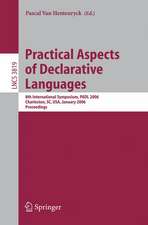The Blender Python API: Precision 3D Modeling and Add-on Development
Autor Chris Conlanen Limba Engleză Paperback – 15 iun 2017
This book is a detailed, user-friendly guide to understanding and using Blender’s Python API for programmers and 3D artists. Blender is a popular open source 3D modeling software used in advertising, animation, data visualization, physics simulation, photorealistic rendering, and more. Programmers can produce extremely complex and precise models that would be impossible to replicate by hand, while artists enjoy numerous new community-built add-ons.
The Blender Python API is an unparalleled programmable visualization environment. Using the API is made difficult due to its complex object hierarchy and vast documentation. Understanding the Blender Python API clearly explains the interface. You will become familiar with data structures and low-level concepts in both modeling and rendering with special attention given to optimizing procedurally generated models. In addition, the book:
- Discusses modules of the API as analogs to human input modes in Blender
- Reviews low-level and data-level manipulation of 3D objects in Blender Python
- Details how to deploy and extend projects with external libraries
- Provides organized utilities of novel and mature API abstractions for general use in add-on development
- Generate 3D data visualizations in Blender to better understand multivariate data and mathematical patterns.
- Create precision object models in Blender of architectural models, procedurally generated landscapes, atomic models, etc.
- Develop and distribute a Blender add-on, with special consideration given to careful development practices
- Pick apart Blender’s 3D viewport and Python source code to learn about API behaviors
- Develop a practical knowledge of 3D modeling and rendering concepts
- Have a practical reference to an already powerful and vast API
Python programmers with an interest in data science, game development, procedural generation, and open-source programming as well as programmers of all types with a need to generate precise 3D models. Also for 3D artists with an interest in programming or with programming experience and Blender artists regardless of programming experience.
Preț: 360.17 lei
Preț vechi: 450.22 lei
-20% Nou
Puncte Express: 540
Preț estimativ în valută:
68.92€ • 72.10$ • 57.25£
68.92€ • 72.10$ • 57.25£
Carte disponibilă
Livrare economică 13-27 martie
Preluare comenzi: 021 569.72.76
Specificații
ISBN-13: 9781484228012
ISBN-10: 1484228014
Pagini: 136
Ilustrații: XX, 138 p. 54 illus., 47 illus. in color.
Dimensiuni: 178 x 254 x 12 mm
Greutate: 0.29 kg
Ediția:1st ed.
Editura: Apress
Colecția Apress
Locul publicării:Berkeley, CA, United States
ISBN-10: 1484228014
Pagini: 136
Ilustrații: XX, 138 p. 54 illus., 47 illus. in color.
Dimensiuni: 178 x 254 x 12 mm
Greutate: 0.29 kg
Ediția:1st ed.
Editura: Apress
Colecția Apress
Locul publicării:Berkeley, CA, United States
Cuprins
Chapter 1: The Blender Interface.- Chapter 2: The bpy Module.- Chapter 3: The bmesh Module.- Chapter 4: Topics in Modeling and Rendering.- Chapter 5: Introduction to Add-on Development.- Chapter 6: The bgl and blf Modules.- Chapter 7: Advanced Add-on Development.- Chapter 8: Textures and Rendering.
Notă biografică
Chris Conlan began his career as an independent data scientist specializing in trading algorithms. He attended the University of Virginia where he completed his undergraduate statistics coursework in three semesters. During his time at UVA, he secured initial fundraising for a privately held high-frequency Forex group as president and chief trading strategist. He is currently managing the development of private technology companies in high-frequency forex, machine vision, and dynamic reporting. Author of Automated Trading with R (Apress).
Textul de pe ultima copertă
Understand Blender's Python API to allow for precision 3D modeling and add-on development. Follow detailed guidance on how to create precise geometries, complex texture mappings, optimized renderings, and much more.
This book is a detailed, user-friendly guide to understanding and using Blender’s Python API for programmers and 3D artists. Blender is a popular open source 3D modeling software used in advertising, animation, data visualization, physics simulation, photorealistic rendering, and more. Programmers can produce extremely complex and precise models that would be impossible to replicate by hand, while artists enjoy numerous new community-built add-ons.
The Blender Python API is an unparalleled programmable visualization environment. Using the API is made difficult due to its complex object hierarchy and vast documentation. The Blender Python API clearly explains the interface. You will become familiar with data structures and low-level concepts inboth modeling and rendering with special attention given to optimizing procedurally generated models. In addition, the book:
This book is a detailed, user-friendly guide to understanding and using Blender’s Python API for programmers and 3D artists. Blender is a popular open source 3D modeling software used in advertising, animation, data visualization, physics simulation, photorealistic rendering, and more. Programmers can produce extremely complex and precise models that would be impossible to replicate by hand, while artists enjoy numerous new community-built add-ons.
The Blender Python API is an unparalleled programmable visualization environment. Using the API is made difficult due to its complex object hierarchy and vast documentation. The Blender Python API clearly explains the interface. You will become familiar with data structures and low-level concepts inboth modeling and rendering with special attention given to optimizing procedurally generated models. In addition, the book:
- Discusses modules of the API as analogs to human input modes in Blender
- Reviews low-level and data-level manipulation of 3D objects in Blender Python
- Details how to deploy and extend projects with external libraries
- Provides organized utilities of novel and mature API abstractions for general use in add-on development
Caracteristici
The largest and most user-friendly text reference for the API The only book you will need if you are a Blender artist with no other desire to program One workweek with Blender Python allows the average user to outperform the procedural modeling capabilities of many major visualization companies







